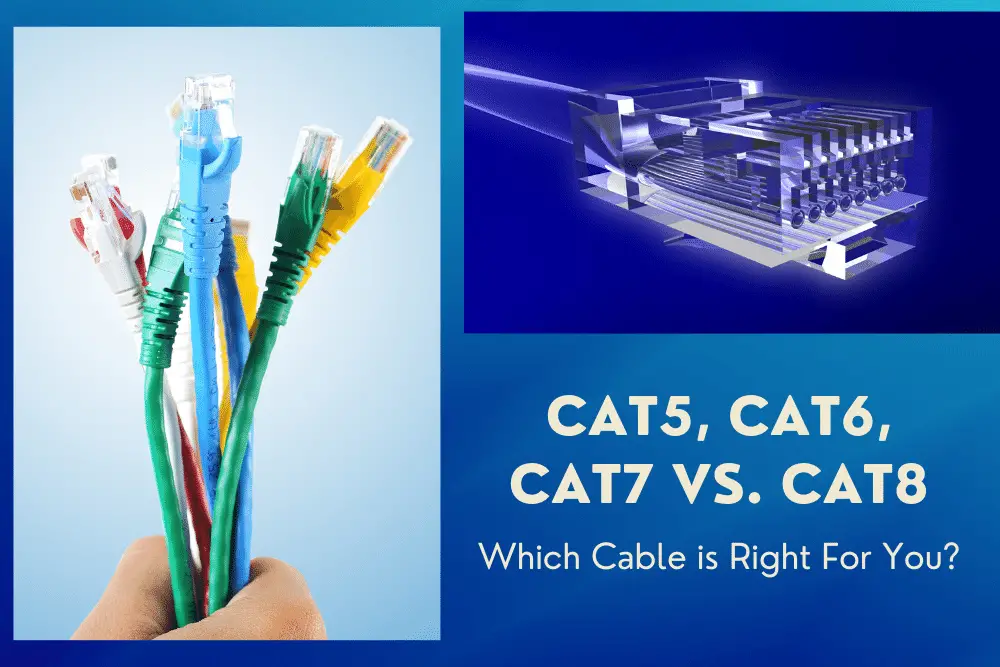In today’s connected world, the performance of your network often comes down to its physical foundation. While Wi-Fi is convenient, nothing beats the speed and reliability of a wired Ethernet connection. But not all Ethernet cables are created equal. As a leading manufacturer of custom and standard cabling solutions, we at D-Lay Cable know that choosing the right cable is critical for achieving optimal performance, whether you’re wiring a home office or a state-of-the-art data center.

Two of the most discussed standards today are Category 6 (Cat6) and Category 8 (Cat8). While they may look similar, they are designed for vastly different applications. dlaycable will break down the key differences to help you make an informed decision for your specific needs.
Article Directory
A Closer Look at Cat6 Cable: The Industry Standard
Category 6 cable has been the go-to standard for new installations in homes, offices, and commercial buildings for years, and for good reason. It represents a significant step up from its predecessor, Cat5e, offering greater bandwidth and better protection against crosstalk and system noise.
- Speed and Performance: Cat6 supports data transfer speeds of up to 10 Gigabits per second (Gbps) at distances up to 55 meters (180 feet). For distances up to 100 meters, it reliably delivers 1 Gbps speeds.
- Bandwidth: It features a standard bandwidth of 250 MHz, with its augmented version, Cat6a, doubling that to 500 MHz. This higher bandwidth allows more data to be transmitted simultaneously.
- Common Applications: Cat6 is the workhorse for modern local area networks (LANs). It’s perfectly suited for high-speed internet connections, streaming 4K video, online gaming, and connecting computers, printers, and smart TVs in a typical residential or office environment.
Introducing Cat8 Cable: The Data Center Powerhouse
Category 8 is the latest and most powerful generation of twisted-pair copper cabling. It represents a quantum leap in performance, but it’s designed for very specific, high-demand environments. You can think of it less as a successor to Cat6 for general use and more as a specialized tool for next-generation infrastructure.
- Speed and Performance: Cat8 is a beast, designed to support staggering speeds of 25 Gbps or even 40 Gbps. However, this power comes with a significant limitation: its maximum channel length is restricted to just 30 meters (98 feet).
- Bandwidth: Cat8 boasts a massive bandwidth of 2000 MHz—four times that of Cat6a. This immense capacity is what enables its incredible data transfer rates.
- Common Applications: Cat8 is intended almost exclusively for data centers and server rooms. Its primary use is for short-distance, high-speed connections between servers, switches, and storage area networks (e.g., “top-of-rack” or “end-of-row” configurations).
Head-to-Head Comparison: Cat6 vs. Cat8 at a Glance
A side-by-side comparison table is the clearest way to see the fundamental differences between these two cable categories.
| Feature | Category 6 (Cat6) | Category 8 (Cat8) |
|---|---|---|
| Max Speed | 10 Gbps up to 55m / 1 Gbps up to 100m | 25 / 40 Gbps up to 30m |
| Bandwidth | 250 MHz (up to 500 MHz for Cat6a) | 2000 MHz |
| Max Length | 100 meters (328 feet) | 30 meters (98 feet) |
| Shielding | Can be Unshielded (UTP) or Shielded (STP) | Always Shielded (S/FTP) |
| Ideal Use Case | Home, Office, Commercial Buildings | Data Centers, Server Rooms |
| Cost | Moderate | Significantly Higher |
The Key Differences Explained
1. Performance: Speed vs. Distance
The most significant trade-off is between speed and distance. Cat8 offers 2.5 to 4 times the maximum speed of Cat6, but its effective range is less than a third of Cat6’s. For wiring an entire house or office floor, Cat6’s 100-meter reach is essential. For connecting a high-performance switch to a server in the same rack, Cat8’s 40 Gbps speed is the priority.
2. Physical Construction and Shielding
To handle its incredible 2000 MHz bandwidth, Cat8 cables have a much more robust construction. They are always shielded (S/FTP – Shielded/Foiled Twisted Pair), meaning each individual pair of wires is wrapped in foil, and then a high-density braid screen encases all four pairs. This makes the cable thicker, more rigid, and exceptionally resistant to electromagnetic interference (EMI), which is crucial in the electrically noisy environment of a data center.
Cat6 cables can be unshielded (UTP), which is common for general use, or shielded (STP) for environments with moderate interference. As manufacturers, we build both to exacting standards, ensuring the right level of protection for the application.
3. Cost and Practicality
There is a substantial cost difference. The advanced materials and complex construction of Cat8 cable make it significantly more expensive than Cat6. For a home user or standard business, investing in a Cat8 infrastructure would be cost-prohibitive and provide no tangible benefit, as consumer-grade networking hardware and internet connections cannot utilize its speed.
Making the Right Choice: Which Cable Do You Need?
Here’s the bottom line, broken down by scenario:
- For Home and Small Office Use: Cat6 or Cat6a is the clear winner. It provides more than enough speed for current and near-future internet plans, streaming, and local network tasks. It’s affordable, flexible, and easy to install over the longer distances needed for residential and small commercial wiring.
- For Future-Proofing a Business or New Build: Cat6a is an excellent investment. It guarantees 10 Gbps speeds over the full 100 meters, providing a robust backbone that will serve your business for years to come without the extreme cost and limitations of Cat8.
- For Data Centers and Server Rooms: Cat8 is the only choice for new, high-speed infrastructure. If you are planning for 25GBASE-T or 40GBASE-T networks and need to connect equipment over short distances, Cat8 is specifically engineered for this mission-critical role.
The D-Lay Cable Advantage: Quality and Expertise
Choosing the right category is the first step. The second, and equally important, is ensuring the cable you buy is manufactured to the highest quality standards. A poorly made cable, regardless of its category, will fail to deliver its promised performance.
At D-Lay Cable, we specialize in both standard and custom cable solutions. Whether you need reliable bulk Cat6 cable for a large office installation or high-precision, custom-length Cat8 patch cords for your data center, we have the manufacturing expertise and rigorous testing processes to ensure every product meets and exceeds industry specifications. Our commitment is to provide a reliable foundation for your network, built for performance and longevity.
Have questions or need a custom cabling solution? Contact our team of experts today. We’re here to help you build a better network.

